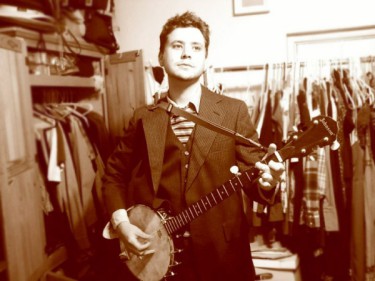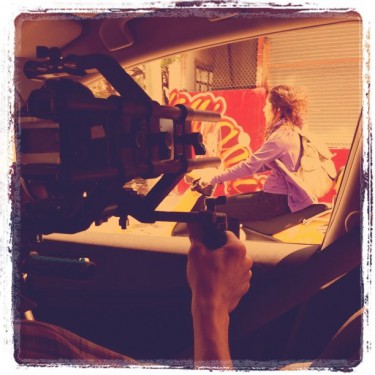 Back to selection
Back to selection
The Microbudget Conversation
We're Only Talking a Few Thousand Dollars by John Yost
The Microbudget Conversation: What Is Regionalism?
Last summer, at about the same time I was shooting Orphaned, Columbia Pictures was shooting second-unit/chase scenes for Salt here in Albany, NY. Apparently we have a really dope set of off-ramps and bridges that made it necessary to shoot one scene in Upstate New York. They brought in all their own people and all their own gear. Many of the actors that worked on Orphaned got day-play extra roles and stand-in gigs, and downtown was a mess for a week. The film community of Albany was pissed and ecstatic all at the same time, and the experience acted as a mirror for upstate film; we had a lot to learn, and a long way to go in order to be a thriving film community. Watching the film months later it was VERY apparent that Angelina goes from Washington DC to Albany NY in a matter of seconds, but only to those of us who live here; the rest of you didn’t notice. (Watch the highway chase scene and look for Albany in the background…I think at one point you can see the Capital building.) Big budgets bring with them the endless possibilities of crafting just the right look out of the entirety of the world. However, with microbudget, our options usually compress down to a square block, or small city to patchwork our worlds. I was recently contacted by Andrew Hevia, a member of Borscht, a film festival and film collective from Miami. What he told me made me excited and jealous…it was the perfect example of local, sustainable filmmaking. I asked Andrew to write up something on the collective, the role place has in microbudget, and the experience he had collaborating with Miami transplant Barry Jenkins.
Your sensibilities matter to us because we have tried to be honest… — not journalistically true, but thematically so. — David Simon
You know the best thing about Miami? It’s so close to the United States. — Anonymous Miami-Dade Resident
Miami is odd.
As a city, it has a peculiar character and a reputation for sweat-drenched lunacy and mayhem. It’s no surprise that major productions frequently shoot here, and a no-brainer we have our own CSI franchise. Hollywood helps promote Miami’s image as a sexy, violent frontier town built on drug money and corruption. It’s a city defined by its media and its myth, built from outside the city looking in.
Currently, four successful TV shows — Dexter (Showtime), CSI: Miami (CBS), Burn Notice (USA) and The Glades (A&E) — take place in Miami, but only half of them shoot here. When the place is anywhere USA, locations are secondary, but when the city is a character itself, how important is authenticity? And how does one go about capturing something as intangible as the “essence” of a location?
The Borscht Film Festival is our attempt to answer these questions. We are a film festival run by filmmakers — we solicit, commission and produce films made in Miami, by Miami filmmakers. For several years, we’ve tried to make films that reflect an authentic Miami experience, without being beholden to any particular style or method.
Borscht began as an excuse for a coterie of students to stretch our creative muscles. We would meet during summer or winter break and give each other assignments bastardized from the Lars von Trier film The Five Obstructions. Our decidedly strange and irreverent films would play to an enthusiastic audience of friends, family and classmates. Over time, this became tradition. After college, Lucas Leyva, a founder of the festival, and I wound up back in Miami. With only part-time jobs, we rented an apartment and Borscht 2008 happened in our living room. That year, Borscht sold out two nights at a local theater and attracted a major sponsor for the following year, giving our shoestring event its first real budget — enough to make several quality shorts and to throw a damn good party. We expanded our circle of filmmakers and turned Borscht 2009 into an all-out celebration of the city, its filmmakers, musicians and artists. Over 1,800 people turned out and scalpers sold tickets to the otherwise free event.
Last year, the John S. and James L. Knight Foundation awarded us a grant as part of the Knight Arts Challenge Program, a grant competition open to the entire city. This was a game changer. With a two-year commitment from one of the nation’s largest grant-giving institutions to match every dollar raised, we were able to exponentially increase our visibility and our output. Borscht commissioned 23 films from some of our favorite filmmakers, sold out a 2,200
seat venue and showed some of the best local films we have ever produced, including a story about a mad scientist-cum-musician battling an inter-dimensional creature, a true-crime documentary about West Miami canal pirates and a web-ready short entitled “I Am Your Grandma.” Also featured: “Play Dead” a tale of the zombie apocalypse from the point of view of the dogs that survive it.
This has all come together because of a strong DIY and DiWO ethic, a small but committed group of independent filmmakers, and a wellspring of civic pride. Miami often feels like a creative outpost, a frontier town where the city is what you make of it. Most of its residents are not native sons or daughters, and there’s a newness to the culture that can be inspiring. This is the feeling we aim to capture with our films, and what I suggest regional filmmaking is all
about.
In 2009, Borscht commissioned a series of movies based around Miami neighborhoods under the condition that all filming took place within specific boundaries. Stories were written to accommodate the spaces available, yet concessions inevitably had to be made to reluctant store owners, traffic patterns and weather. Factually and aesthetically, we cheated. And in doing so, I came to see that regionalism has to be more than a location fetish; it must reach
for a greater truth — a fidelity to the experience of a place, an acknowledgment of its history, character and mood.
When Barry Jenkins made Medicine for Melancholy and set it in San Francisco, he built a story around the location, using San Francisco as a character and a theme. Micah’s struggle for connection with Jo came from not only his longing to connect romantically, but also from his growing disconnect with the city. The film was outwardly about both of these things, and intertwined them throughout.
This thematic connection is key to successful regionalism — understanding the place before recreating it on film — studying its history and placing your story in context of the broader narrative of the environment and letting your characters exist within that space. It was Barry’s successful rendering of San Francisco that made him such an obvious choice for a Borscht project. Born in Miami, Barry brought the understanding of a native but with the emotional distance of an expatriate. He had grown up in the city and moved on — only to return years later and find that a new Miami has sprung up in his absence. To me, this meant that Barry was able to look at the city with new eyes.
The resulting short film is not Barry’s experience; it’s his exploration of a Miami that didn’t exist when he last lived here. Astonishingly, the city featured in the movie has existed for only about five years, if even that long. Miami’s development has been so rapid that most of our locations ± a re-purposed train station turned music venue, an elegant private art collection, a bombed out construction site and a swank new condo — all manifested after 2006.
The characters are all portrayed by non-actors, often playing heightened versions of themselves, in spaces many of them truly inhabit. The only physical location with some years on it is the main character’s apartment, a building constructed in the 1940s, which incidentally is also where the actress really lived. Thematically, the film explores an emotional space very much like the physical one — a wistful nostalgia for a different era, a girl coping with upheaval and frustration as the relationship she once had is replaced by absence, rejection and sadness — and all with a newness so sudden she is dumbstruck into silent contemplation.
The neighborhoods featured and Ana’s (the main character) lifestyle are new to Miami — they were not possible even a decade ago. Miami is in transition, and it can be hard to find direction during a major change. Like Ana, Miami is searching for purpose. Set to the music of an up-and-coming south Florida musician, Mike Diaz (aka MillionYoung) the score imbues the movie with a tropical sense of longing, an ambient and echoing loss.
During the production, Barry allowed the environment to influence the process, saying once that “if we come back with nothing but what we set out to get, we’re losing.” Part of this was dictated by financial realities — we couldn’t afford to control the environment, so we had to adapt. After one particularly crushing setback, Barry turned to me with a smile and said, “This is independent film right? We’re going to be fluid.”

The end result is a film that captures space as well as character. Its combination of theme, location, plot and score is unique to Miami, a wholly original synthesis of elements. Is Chlorophyl a definitive Miami movie? Doubtful. As a film with a regional focus, it’s meant to be true to the world its character’s inhabit, existing in the same spaces that facilitated its making. Chlorophyl reflects a version of the Miami experience and relays it in a way few filmmakers have tried. It’s part of a movement to give voice to a city that too often has let others speak for it.
Borscht continues to evolve as we look to produce microbudget feature films in the near future. As we grow, we’ve made inroads with the local production community, finding filmmakers, crew, vendors and facilities in town, bringing us closer to the ideal of converting Miami into a sustainable regional film center. To this end, we’ve sought out a patron saint, a hometown celebrity-made-good who can bankroll our event as a way to give back to the city, someone in the entertainment industry with untold millions in a Swiss bank account, someone who has the perfect mixture of South Beach swagger, ethnic humor and roguish charm. Sadly, @BrettRatner is no longer responding to our tweets.
– Andrew Hevia
As we go deeper into this conversation the things that stay with me the most are community, budget, and artistic merit. Will we simply allow the budget to define this movement’s borders, or will it be actual borders and townships? Will this form of filmmaking be sustained by native film community members across the globe, connecting to each other via the internet? OR will global acceptance come when the movement is defined by it’s content and not it’s mission statement?
Thoughts?
braveandthekind@gmail.com
